
Food waste in tourism is a bigger issue than previously thought
There are major gaps in how food waste in tourism is understood and calculated, according to researchers at the University of Eastern Finland and the University of Southern California. Food waste originating from hotels, restaurants and events is recognised and can be estimated and calculated, but as the tourism industry is becoming more and more diverse, so are the sources of its food waste.
According to the researchers, a focus on preventing food waste only in the traditional food service and accommodation establishments ignores the reality of growing tourist households and will stifle sustainability efforts.
Food waste is a major issue globally, and it has also been identified as the most prominent type of hospitality waste. Annually, roughly 1.3 billion tons of food is lost or goes to waste, which is equivalent to one third or even up to one half of all food intended for human consumption. Food waste is a major environmental, social and economic issue.
Indeed, the tourism industry is facing ever-growing economical, societal and legislative reasons to address food waste. Today's tourism is not limited to package travel and hotel stays, thanks to the emergence of alternatives such as camping, couch surfing, AirBnB, staying at friends' and relatives' homes or travelling across the country in a recreational vehicle, for example. Food waste is created in all these tourist households, but very little research into the topic has been carried out so far. Yet, there is a need to mitigate food waste from these sources as well.
"We can already see that there are savvy players in the tourism industry who have succeeded in reducing their food waste and have even managed to turn that into an asset. Yet, it is not enough for only the traditional food service and accommodation establishments to reduce their food waste, we need to get all tourist households on board. As the tourism sector changes, research into food waste and sustainability becomes ever more important," Research Manager Juho Pesonen from the University of Eastern Finland says.
According to the researchers, comprehensive reduction of food waste requires that its sources and amounts are identified and that its disposal by tourist households is addressed. In addition, there is a need to study the drivers of tourist household food waste and barriers to its reduction.
"We need models that describe how food waste is created in tourist households, and how that possibly changes over time. Moreover, we need to identify platforms and intersections where food waste can be addressed, for example through social media. In the end, it all boils down to sustainable tourism and the circular economy," Pesonen notes.
- Agriculture and Food
- Food and Agriculture
- Hazardous Waste
- Recycling and Waste
- Environmental Science
- Retail and Services
- Resource Shortage
- Popular Culture
- Hazardous waste
- Radioactive waste
- Waste management
- Gastrointestinal tract
Story Source:
Materials provided by University of Eastern Finland . Note: Content may be edited for style and length.
Journal Reference :
- Ulrike Gretzel, Jamie Murphy, Juho Pesonen, Casey Blanton. Food waste in tourist households: a perspective article . Tourism Review , 2019; ahead-of-print (ahead-of-print) DOI: 10.1108/TR-05-2019-0170
Cite This Page :
Explore More
- How Statin Therapy May Prevent Cancer
- Origins of 'Welsh Dragons' Exposed
- Resting Brain: Neurons Rehearse for Future
- Observing Single Molecules
- A Greener, More Effective Way to Kill Termites
- One Bright Spot Among Melting Glaciers
- Martian Meteorites Inform Red Planet's Structure
- Volcanic Events On Jupiter's Moon Io: High Res
- What Negative Adjectives Mean to Your Brain
- 'Living Bioelectronics' Can Sense and Heal Skin
Trending Topics
Strange & offbeat.
Food Waste in Tourism
- October 14, 2020
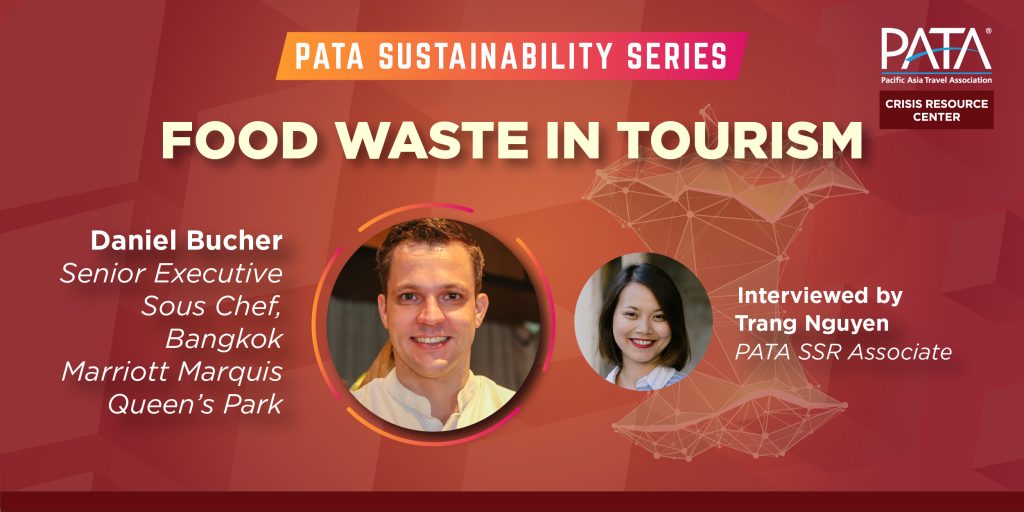
“The Future of Tourism” Interview Series
Disclaimer: The views and opinions expressed in the interviews are those of the interviewee and do not necessarily reflect the official policy, position or views of the Pacific Asia Travel Association (PATA) or any of its employees. The aim of the interviews is to assist with the rapid, robust and responsible rebuilding of the Asia Pacific travel industry.
Every year one third of the world’s food is lost or goes to waste. The Covid-19 crisis has showcased the importance of our food value chain as one of the primary needs and caused major changes in how people buy and consume food with a shift away from restaurants to eating more at home and increased e-commerce deliveries.
During the lockdown, more food has been going to waste throughout the supply chain, especially for the export-oriented agricultural and fishery products. Local markets are not ready to absorb such large volumes of produce, and thus organic waste levels have increased substantially. [1]
Tourism is recognized as the strategic industry to reduce food waste. In order to do so, it is crucial that all sources and amounts of food waste being produced in the tourism industry are properly understood. Although the health crisis will likely outgrow the environmental concerns at the moment, tourism businesses need to rethink investment in responsible recovery addressing key environmental issues including food waste for a more sustainable future.
Daniel Bucher , the Senior Executive Sous Chef at Bangkok Marriott Marquis Queen’s Park to explore why it is important to tackle food waste during the pandemic, what lessons learned are there for a sustainable recovery and how hospitality and tourism businesses can strengthen their food waste management post Covid-19. (Read/Listen More)
[1] https://unctad.org/en/pages/newsdetails.aspx?OriginalVersionID=2333
Q : Hello, Daniel! Thank you so much for your time today. We are very excited to have you with PATA in this interview. To start, would you mind introducing a bit about yourself please?
Daniel: Hi everyone! Thank you for having me. I’m originally from Germany, and I have been in Thailand for almost 10 years. I am a trained chef and my day job is currently at the Bangkok Marriott Marquis Queen’s Park, Thailand’s largest five-star hotel. I’ve always been passionate about sustainability and food systems. For me, it’s part of being a chef to think about where food comes from and where it goes after it leaves my kitchen. Since 2016, food waste has also formally become a key topic for me. I am working in several honorary and consulting positions besides my main job. I am a Food Waste Ambassador for UN Environment in Bangkok. I am also a Food Waste Ambassador for the Scholars of Sustenance, which is an active food bank in Bangkok, as well as Phuket and Bali. And finally, I work closely with TCEB Thailand as Food Waste Ambassador and advisor on sustainable food systems. TCEB is the Thailand Convention and Exhibition Bureau, basically the government organization tasked with looking after tourism businesses in Thailand.
Q: With the current situation of the COVID-19 crisis, what are the biggest impacts on your hotel kitchen and restaurants so far?
Daniel: The COVID-19 crisis was completely unexpected. None of us knew what to do and how to react at first. So, there is a lot of questioning and reinventing ourselves. If you know how food systems work and how restaurants become profitable, it’s usually the routine and long-term improvements of processes that make a restaurant profitable, or make a food business work efficiently. Obviously, disruptions like this are always critical in the food sector. So, we had to relook at a lot of processes and continue to do so daily.
The first is hygiene. Most hotels and big scale food operators have already been certified with HACCP or ISO 22000, or a similar hygiene standard prior to the COVID-19 crisis. With the current situation, the hygiene issue has been highlighted in the media and customers are more aware of it. Reinforcing the existing standards, making them more visible and ensuring that customers feel safe are some of the key challenges. However, the need to do more individual packaging is new. And very quickly, this leads to other problems. Plastic is definitely a problem that is now coming back, after years of working on reducing plastic use. The COVID-19 crisis has increased disposable and plastic use massively in all food businesses and food operations. When it comes to food waste, we also have the question of what happens when we have to serve our guests directly, when menus work differently and so on. It’s all about the psychology of selling food including the menu designs and how guests are approached. Also, don’t underestimate the small things – like how important it is when customers walk into a restaurant or bakery and they smell the fresh food. But now, they walk in with a mask on and don’t notice the smell so much. These disruptions and changes have definitely impacted what sells and how we sell it. We have to work on all of this quickly. Regulations keep changing, but we also get better at dealing with those challenges and finding better solutions to provide better experiences for the guests, and guarantee that our food quality is the same or better, but still making the business work somehow.

Daniel: I think food is always extremely important. We should always deal with food. Now we’re dealing with a virus infection, not too different from a flu infection or other similar virus infections. For me, there’s no question that your immune system and your physical health can combat quite effectively how susceptible we are to an infection to this virus. Eating is number one when it comes to being healthy or having a healthy immune system. I think we still underestimate and often have wrong information about what makes us healthy. We’ve adapted the belief that we can just eat whatever we want and then we take some medication when we get sick. In fact, you literally are what you eat when it comes to your immune system and health. So, eating is very important, first and foremost, to keep us healthy, keep us fit, and keep us resistant against any threats, including this virus.
But then, it’s also about the mental insecurity for a lot of people. People have been locked up at home for a long period of time. And it is often food and family that bring us back together and act as a reminder of what we truly value. I think you’ve also seen it a lot on social media over these past months that people have turned to cooking, baking or making things at home to find that emotional stability, security and pleasure; something positive that the current situation was not able to give them. This is a sign of how important food is to our emotional health and how it’s worth caring for.
And then comes the food systems and supply chain. Any disruption is always a threat to how our food systems work. That is because food is traded through so many hands. There is so much happening in terms of refining, value adding or actual cooking processes; from the harvesting of an ingredient to what you actually buy in a supermarket or at a restaurant. There’re many steps in between. Food is traded globally, and food prices are looked at globally. So, any small disruption is already a problem and brings changes of pricing, profit margins or availability of products. Now, a massive disruption in our system like this actually becomes very visible. In some regions, you’ve seen supermarket shelves empty. At the same time, farmers are throwing away a lot of products that they couldn’t sell anymore because their traditional supply chain suddenly had missing links. Taking for example the farmers that were specialized in growing specific heritage vegetables for high-end restaurants; all of a sudden, all restaurants were closed and they could not sell their produce. All these disruptions lead to waste as well as lots of product that cannot be used.
On the other hand, they lead to shortage of products that are maybe needed. But these problems are not specific to the COVID-19 crisis; this is happening all the time. Food is wasted because of supply and demand issues or supply chain issues or trading issues. All the time, we’re throwing away food which is perfectly fine to eat, simply because the logistics don’t work as efficiently as we want them to or just because the demand changes. Another food is trending or a food type or brand gets a bad review in the media and no one wants to buy it anymore. These things happen constantly. What we see now is just a bigger magnitude. It hit supply chains hard enough to make it visible to all consumers. And this should be a warning sign indicating that the food waste issue is worth looking into. We need to improve and understand better how food is traded and where it gets lost. I hope in the public perception, we will not just forget about it after the crisis is gone and things seem back to normal. This problem is a continuous problem that we are facing in our food systems.

Q: Despite all the challenges, do you see any opportunities from the COVID-19 crisis to tackle food waste, particularly in hospitality and tourism industry?
Daniel: I’ve been in a lot of zoom calls and meetings over the last months. There have been lots of discussion in the sustainability realm. Some people are really hopeful because they believe that big disruptions can lead to powerful change. We can rebuild, and this time we’ll make sustainability the big agenda. Our job is to keep the sustainability topics alive, like food waste, plastic waste and so on.
But I think it’s illusional to believe that everything’s going to be much better because the reality is hitting our economy hard. In the business world, there is still the perception that sustainability is nice to have but not a business essential. And as long as that’s the case, it’s a hard sell. Perhaps the exceptions are businesses that really define themselves through sustainability. The opportunity here is really about the changes in consumer behaviors, which allows businesses to position themselves in the market. One of the biggest problems to change consumer behavior is always habits, and it’s very hard to push someone out of their comfort zone to do something differently. Now, the COVID-19 has pushed everyone out of their comfort zone. So, at the end of the day, it’s really up to consumers what businesses come out strong, and whether consumers will continue the ‘buy local and buy sustainable narrative’. Then those businesses will probably do better than others.
I also want to quickly talk a little more about food waste. People might still be unaware of the fact that up to one third of all food that’s produced globally actually ends up in a bin and ultimately a landfill. This number is debated, and there are different views. The reason why the number is debated is because it is very hard to measure. Normally, the way we trade food, what goes in the bin has been paid for and therefore, isn’t measured. You can measure household waste as a whole, but you can only estimate what percentage of that is food waste. In Thailand, the current number that we’re going with is between 70 and 80% of the household waste is food. So, a big amount of all waste is food. This ratio is different in other countries depending on what systems are in place for composting and so on. In general, we can say that a huge portion of our waste is food.
Food lands in the bin due to many different factors along the path of trading food. When we imagine food systems, we often think the milk comes from a farm, it goes in a bottle, it comes to me and I drink it. The reality is more complicated than that. There’re a lot of steps between farming and consumption. At every step, there are processes like quality control or sorting. It means that there is loss at every step.
In addition to that, you have the demand and supply problems that we’ve talked about before. Even with 100% predictable demand, which we never have in food systems; but even if you had that, it’d still be difficult to trade food without losses because food has very short shelf life. With the add-on of change in demand, every loss is multiplied by a factor. When you purchase food at the supermarket or you buy something in the restaurant, you’re not only buying the 500 grams of beef that you actually pick up and put in your trolley, but you are also purchasing a lot of waste that has been generated along the way. You take your beef home, leave it in the fridge and you don’t eat it because it smells bad after three days, you will throw it in the bin. You have now not only wasted the resources of raising the cattle, but also the resources of all the supply chains and consequently, additional loss along the way.
We are used to having a lot of food being constantly available and we do not accept if something is out of stock or not available. We all saw the panic in the COVID-19 crisis. When supermarkets didn’t have certain stock items anymore, people panicked and they started to bulk buy and stock up on items, which they are probably never going to eat like canned beans or canned fish. They just overbought because they were panicking. We tend to think that there might not be enough food. This is not the case, there is always more than enough food. It is just very difficult to fix the supply chain issues when they are occurring so suddenly. All of the wasted food is terrible in many different ways. Firstly, a lot of good resources go into it like fresh water, energy or land use; these are all wasted with the food being wasted. In addition to that, food ending up in the landfill releases methane gases. This process also contributes massively to greenhouse gas emissions. It’s basically a double loss as we lose on the input side and on the output side; plus, we lose a multiplying factor of the actual quantities we’re losing. Any food, even just 10 grams of food that isn’t wasted, has a dramatic effect on making our global food systems more efficient and more sustainable.

Q: In your opinion, how can hotels, restaurants and the food and beverage businesses manage food waste more sustainably, especially with the cases of smaller scale businesses?
Daniel: I think the first thing we need to do as a business is to take this very seriously. We need to admit that it is a serious problem. Every time I talk with a restaurant owner a business owner or a chef, the first answer is: “No, we don’t have a problem with food waste in my business!” Generally, it is not accepted that food waste is a problem that every restaurant has. But the sentiment here is “you’re trying to blame me for food waste”, so there is no food waste problem. It’s crucial to realize that every food business has this problem. Don’t feel like you’re singled out or you are being blamed for something. It is a global systemic problem. It’s not the problem of one or two people doing something wrong. In fact, it’s everyone that is doing something wrong. Producers, distributors and traders, businesses and consumers alike! One or two people doing something right can already have an impact on making it better. So, to look at this differently as a business owner and to be aware of this problem is the first important step.
The next step is to go and look at where you are wasting and how much you’re wasting. You need a system of measuring and recording. It can be as simple as taking photos of your bins or doing daily audits or walk-throughs to check what’s in the bins. In can be as sophisticated as starting a measuring system with expensive technology to measure and record everything you’re wasting. This depends on what size of business you are and how complicated your food operations are. There are different solutions for different kinds of businesses. But if you don’t start to measure and record what you’re wasting and how much you’re wasting; you will not be able to put effective measures in place.
The third step depends on what kind of business you are. There are many different starting points. When I talk to businesses or consult businesses how to tackle food waste, I always recommend them to start with the quick wins so that you can see visible impact and are able to report results quickly. That gives you and your team motivation to keep going. No matter where you start, it is important to keep in mind that the most effective measure is to avoid waste in the first place. When we look at the food waste pyramid to understand where to tackle food waste, the best place to start is right at the top. Not even producing the food, not even purchasing the food, not even making the food that is later wasted has the biggest impact on a more efficient operation, cost and sustainability. If you manage to not purchase the food, you also do not purchase all the waste along the way of it getting to you. But this one is the hardest to do because it is usually rooted deeply in the systems of how we sell, how we produce and how we run our kitchens. But this is the one that ultimately has the biggest impact on businesses, the global food systems and the environment.
When it comes to food waste, the first thing that businesses think of is often composting, or food donation. These are great to look at as best practices, they are great examples, especially food donation, which I think you cannot praise highly enough. It is better if food is eaten by people than being thrown in the bin. Food donation is important; however, it is a diversion mechanism. All you’re doing is looking at the waste you’ve already produced, and then finding new waste streams for it. And while I really encourage every business to do that, I just want to emphasize that what is effective to avoid food waste is not letting it occur in the first place and looking at how you can avoid it. How we do not generate food waste in the first place is the question that really drives me.
I hope this is helpful for many people out there. There are actually a lot of good resources on the internet and also, feel free to reach out and to get help. PATA released the BUFFET toolkit last year, which can provide many helpful tips and tricks. WWF has the Hotel Kitchen project as well as the champions 12.3. If you are looking into this, just look for help, reach out to me or others in this field and there are definitely solutions for you to start low-key and without investment. The problem that I hear a lot is that if you go and reach out to a consultant, they might come back with a hefty investment fee while trying to convince the business that it’s worth it when looking at return on investment. This can be true in some cases. However, for a lot of businesses, it is difficult to get budget approved for tackling food waste, especially during this time of crisis. There are many solutions of how you can start at no cost with some processes you can implement today. And with that, follow the simple steps I’ve outlined before; look at where you’re wasting and what you’re wasting. Then find online resources, reach out to people, call some businesses you’re working with that have a good reputation, and find some help on where and how to start. Anything you do today is a lot better than not doing anything at all!
Subscribe to get the latest news, straight in your inbox.
UN Tourism | Bringing the world closer
Integrating circular economy principles in tourism, share this content.
- Share this article on facebook
- Share this article on twitter
- Share this article on linkedin
Circular Economy
Circularity represents a strategic approach for the tourism sector, notably from the point of view of minimizing its environmental impacts, including waste and pollution as well as CO2 emissions, given the potential of a circular economy to decouple economic growth from resource use.
Integrating circularity and further advancing resource efficiency in the tourism value chain represent an opportunity for the tourism sector to embrace a sustainable and resilient pathway.
The COVID-19 crisis raised awareness of the importance of local supply chains and the need to rethink how goods and services are produced and consumed, both key elements of a circular economy .
For tourism businesses, the circular economy can bring competitiveness, not only in connection with opportunities for innovation, differentiation and the diversification of income streams, but also as government and investors are increasingly looking at environmental, social, and governance (ESG) policies.
For tourism destinations, the circular economy offers the opportunity to enhance the sustainable development impacts of tourism , generating wellbeing for the local population through the creation of new jobs and more inclusive local value chains, thus creating a virtuous circle between businesses and territories.
For tourists, the circular economy brings an opportunity to leave a positive footprint, to travel with purpose, and can lead to multiplier effects when it comes to the transformation of the whole tourism ecosystem through behaviour change.
The extensive and transversal value chain of tourism offers numerous opportunities to think how can we make longer, better, more circular use of the materials and products that we utilize to deliver our service, creating value and partnerships, and bringing landfill waste as close to zero as possible. Successfully transitioning to a more sustainable and resilient tourism model through the application of circular economy principles will depend on active public private collaboration and partnerships, inter-governmental cooperation, effective policies and policy instruments and financing.
UN Tourism is supporting the shift towards a circular economy in tourism value chains through plastics within the framework of the Global Tourism Plastics Initiative , and through food within the framework of the Global Roadmap for Food Waste Reduction in the Tourism Sector :

- Transforming food value chains in tourism The Global Roadmap for Food Waste Reduction in Tourism is a new framework that aims at promoting the uptake of food waste reduction strategies by tourism stakeholders to enhance the contribution of the sector to sustainable food systems. The Roadmap supports the implementation of SDG12.3 and aims to raise awareness among tourism stakeholders of the opportunities deriving from a more sustainable and circular management of food, with special emphasis on reducing food waste as a cost-effective and environmentally responsible strategy.
Circularity represents a key enabler within the framework of the Glasgow Declaration on Climate Action in Tourism which aims to accelerate mitigation and adaptation efforts from tourism stakeholders.
All the initiatives are implemented under the umbrella of the One Planet Sustainable Tourism Programme.
Related links
- The Ninth Environment for Europe Ministerial Conference (UNECE Conference)
- G20 Bali Guidelines for Strengthening Communities and MSME as Tourism Transformation Agents: A People-centred Recovery
- UN Tourism Recommendations for the Transition to a Green Travel and Tourism Economy
Related News

Baseline Report on the Integration of Sustainable Consumption and Production Patterns Into Tourism Policies

Ministers Agree to Advance Circularity and Climate Action in Pan European Tourism
- Product Overview
- Reporting and Disclosures
- Target and Goal Setting
- Data Analytics
- Data Management
- Education and Support
- Integrations
- 360 Framework
- Case Studies
- Blogs and articles
- eBooks, guides and more
- Media Centre
- Book a Demo
Food waste management in the tourism industry
Food waste is about so more than just leftovers when it comes to tourism, hospitality and beyond
Solving the food waste challenge is a must, for a more profitable and resilient hospitality business. Food waste is a troubling issue in today’s world. While statistically significant, it doesn’t get the same coverage as more prominent environmental problems that make the headlines, such as habitat loss, extinction and large carbon footprints. The fact that food waste is overshadowed by these issues has also led to a lack of research into the matter.
But the reality of the world’s food waste problem is staggering. Statistics compiled by the United Nations Environment Programme ( UNEP ) report that one-third of all food produced globally is wasted – the equivalent of 1.3 billion tonnes a year.
Which.co.uk estimates that the hospitality and food service industry creates 18% of all annual food waste, and a study found that a hotel in Bangkok wasted an astonishing 1.3 tons of edible food in a single week.
The implications of food waste in tourism and hospitality
Food waste takes many forms. There are two types of food waste: edible and inedible. Edible food waste refers to anything that was fit for human consumption before it was either discarded or became stale or out of date. Edible food waste can often be used for animal feed, or otherwise can be composted. Inedible food waste refers to the parts of food products that regardless of its state cannot be eaten, such as eggshells, bones and some fruit/vegetable peel. Tourism and hospitality businesses must find ways to safely and responsibly dispose of, or far better, reuse, this food waste.
So what’s the problem with wasted food? Doesn’t it just biodegrade ? Well, it’s not that simple. Food is wasted at all points in the supply chain – in the cultivation stage, in transportation, in storage, in preparation and by the final supplier or consumer. And it’s not just the food that is wasted. Food that is transported and then not eaten also results in wasted emissions: the fuel used to deliver the food to its destination and the energy consumed for refrigeration. When sent to landfill, wasted food produces methane – a greenhouse gas that is even more potent than carbon dioxide – meaning that the environmental impacts of food wastage are manifold.
Another factor to keep in mind when thinking about food waste is the financial implications. Drilling down on your efforts to reduce food wastage is not only good for the planet, but good for your budget, too. While tourists might be paying more than cost price for their serving at the buffet breakfast, the less food wasted each morning, the fewer ingredients you need to fork out for.
Then there’s the social implication of food waste. Action Against Hunger , an organisation committed to tackling food poverty around the world, state that at the time of writing, 828 million people – almost 1 in 10 – don’t have enough to eat. When this many people are suffering from hunger or even starvation, the problem of food waste becomes a moral, human problem – not ‘just’ an environmental one.
10 steps to fighting food waste in tourism
While it’s clear that food waste is a problem in society and in business that needs solving, it can feel like an overwhelming task. There’s no universal rule book for food waste management in tourism and hospitality, as food service varies by business. However, it’s a good idea to ask how other businesses tackle this problem to inspire your own approach.
The first step to reducing your food waste is to gain an accurate understanding of the extent of the problem. Measuring your waste by tracking the number and weights of wasted whole ingredients, as well as the weight of unfinished food from customers’ (and on-site employees’) plates and recording it in a regularly maintained database is a great way to deduce the reality of food waste in your business. This can also help you calculate how much money is wasted on food that isn’t eaten. Regularly updating these metrics and comparing the data can help you track your progress once you implement measures to reduce food wastage.
Once you have an accurate view of the amount of food that is wasted, it’s time to take measures to tackle those numbers.
Here are 10 simple ways to reduce food wastage in your business:
- Provide smaller plates at buffets to deter guests from overestimating how much they need
- Introduce composting schemes, encouraging on-site employees to compost waste to use in your garden or send to composting hubs
- Freeze fruit that is starting to go soft or bruised to use in smoothies or coulis
- Provide compostable or recyclable containers for guests to take their leftovers away in
- Raise awareness and educate employees on the importance of avoiding waste in the kitchen
- Donate excess edible food waste to farms to use as animal feed
- Keep an inventory of your food stock with best before dates and rotate stock accordingly
- Track the popularity of menu items and consider removing or substituting less popular options to avoid overstocking ingredients
- Offer a kid-size option to prevent leftovers when serving children
- Use airtight containers to prevent food from going stale or mouldy for longer and label with the date it was prepared and the date it can be kept until
Reducing food packaging waste
It’s not just the food that contributes to waste in your kitchens. Packaging is another element that needs to be considered to have a holistic and effective waste management system. It’s essential to separate different materials – plastic, paper, glass, card, etc. – for proper recycling. It’s also important to wash containers and packaging if contaminated with food before they are put in the recycling bins, too.
There are ways to reduce the amount of packaging that gets discarded in the process of providing food and beverage services to your customers. Buy in bulk to reduce the amount of plastic waste you generate. You can also shop at zero-waste/refill stores, where you can refill your own containers with loose ingredients or use paper bags that can be reused and recycled when they are empty. You can find these kinds of grocery stores both online and on some high streets. Buy vegetables loose from local markets, greengrocers or farm shops, rather than from wholesale companies, to reduce unnecessary plastic waste. Engage suppliers on providing goods in reusable containers and biodegradable packaging. This can be a tricky one as the right packaging reduces food waste by protecting the food. Find the balance between sustainable packaging and reducing damage to food.
How Weeva can help lodges, hotels and resorts reduce food waste
Weeva has created an entire parameter to help businesses with their waste management, entitled Zero Waste. In addition, the parameter Sustainable and Ethical Procurement covers all sustainable food- related matters, including food waste. We can help you educate your staff on food waste management and reducing food waste with awareness exercises and tasks that help you track the extent of the problem and implement practical, effective measures to make a positive impact. The tasks and activities include tips for how you can make waste management part of the daily running of your business, as well as how you can engage and educate your customers and the local community to support your efforts. With instructions on how to make a difference and who should be involved in the running of your waste management programme, Weeva sets out a clear plan for making excessive food waste a thing of the past.
What are you waiting for? Come on. Be more Weeva!
Like what you have read?
Watch this waterbear video to see how two chefs are reducing food waste at their restaurants., get a zero waste roadmap.
Would you like to download a Zero Waste Roadmap to get you started on your waste management journey?
Provide your details to download the document:
Other content you may like
Reducing plastic in the travel and tourism industry [colstyle:1] [hubposttype:wva-article].

Reducing Plastic in the Travel and Tourism Industry
11 ways to reduce food waste in hospitality [colstyle:2] [hubposttype:wva-blog].

11 ways to reduce food waste in hospitality
How to reduce packaging waste in your tourism business [colstyle:3] [hubposttype:wva-blog].

How to reduce packaging waste in your tourism business
The best in sustainable tourism delivered to your inbox
By signing up for this newsletter, you are agreeing to receive news, offers, information and marketing communications from Weeva Limited. Click here to view our Privacy Policy. Unsubscribe links are provided in every email.
To read this content please select one of the options below:
Please note you do not have access to teaching notes, food waste in tourist households: a perspective article.
Tourism Review
ISSN : 1660-5373
Article publication date: 9 October 2019
Issue publication date: 20 February 2020
This paper aims to provide a perspective on food waste by tourists and tourist households, now and in the future.
Design/methodology/approach
This is a perspective article that summarizes contemporary thinking about food waste and conceptualizes food waste specifically for tourist household settings.
In tourism, food is more than nourishment and extends to visitor experiences and attractions. Yet food waste arising from tourism activity is a major environmental and societal issue. Festive moods and holiday spirits – synonymous with over-sized portions, bountiful buffets and entertainment excess – exacerbate food waste. Cultural norms that portray food waste as a sign of good hospitality further aggravate the problem. This paper argues that efforts to reduce food waste in tourism require new conceptualizations of tourist households, and where food waste occurs in relation to tourism, and of who should be responsible for preventing and managing food waste.
Research limitations/implications
The tourism industry faces ever-growing economical, societal and legislative reasons to address food waste, which are dynamic and difficult to predict.
Practical implications
Savvy meal providers will migrate towards reducing their food waste or turning it into assets. However, a focus on preventing food waste only in traditional food service and accommodation establishments ignores the reality of growing tourist households and will stifle sustainability efforts unless theoretically unpacked and practically addressed.
Social implications
A third of food produced globally is lost or wasted. Stark facts, proclamations and regulations underscore food waste as a burgeoning global problem with major environmental, social and economic costs.
Originality/value
Food waste, in general, and by tourists, is a burgeoning environmental, social and economic challenge. This is one of the first articles to focus on this topic and introduces the concept of tourist households.
- Sustainability
- Circular economy
- Tourist households
Gretzel, U. , Murphy, J. , Pesonen, J. and Blanton, C. (2020), "Food waste in tourist households: a perspective article", Tourism Review , Vol. 75 No. 1, pp. 235-238. https://doi.org/10.1108/TR-05-2019-0170
Emerald Publishing Limited
Copyright © 2019, Emerald Publishing Limited
Related articles
We’re listening — tell us what you think, something didn’t work….
Report bugs here
All feedback is valuable
Please share your general feedback
Join us on our journey
Platform update page.
Visit emeraldpublishing.com/platformupdate to discover the latest news and updates
Questions & More Information
Answers to the most commonly asked questions here

- Service Providers + Destinations
- Content Creators
- Collaborations + Partnerships
- What is Rooted?
- Rooted’s Founder
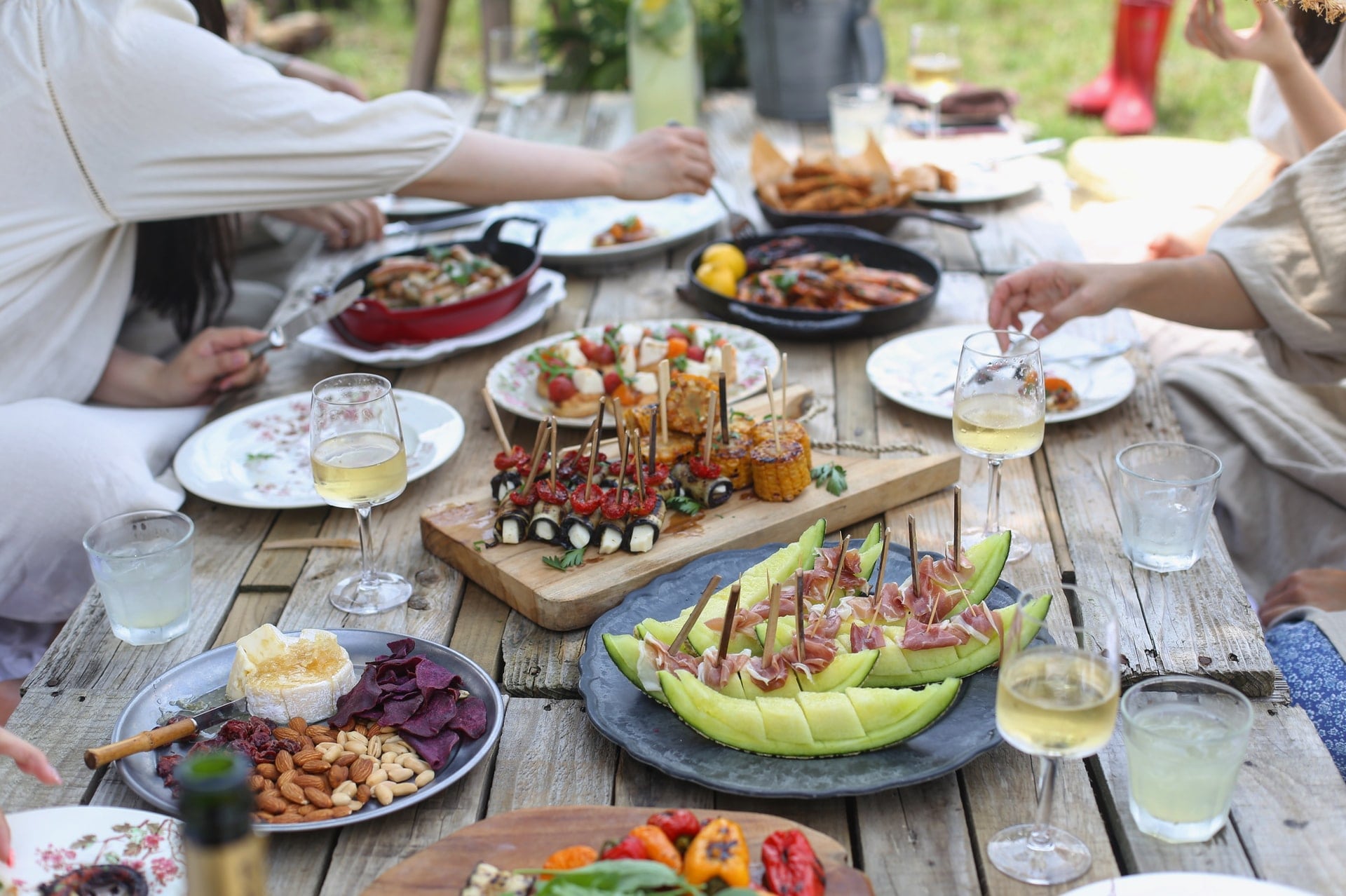
Involving travelers in food-related conversations involves them in addressing tourism's food waste problem. | Photo by Lee Myungseong on Unsplash
Environmental Issues
September 29, 2020
Innovative Solutions for Curbing Tourism’s Food Waste Problem
From grabbing a quick bite at a hotel breakfast buffet to tasting local snacks on the road, food is an integral part of the travel experience. Sometimes it’s just a necessity, and sometimes it is an experience in and of itself.
But along the way, there are bound to be more than a few morsels that end up in the garbage.
A bite here and a serving there don’t sound like much, but food waste — and its environmental impact — adds up incredibly fast. In fact, according to the WWF , one-third of all food produced is wasted, either in the supply chain or thrown away. That’s the equivalent of 1.8 billion tons of food that never reach a person’s stomach.
Despite this excessive food waste, 821 million people go hungry every day!
And, as if this disparity isn’t worth critical concern in and of itself, the actual production and distribution of food has enormous environmental impacts. The WWF reports that the food industry is responsible for about 25% of all greenhouse gas emissions. Further, agriculture has caused 73% of all deforestation and land conversion.
To say that food production and waste — and its counterpart, hunger — are critical and urgent problems the world needs to address is an understatement. Doing so is paramount to getting ahead of the climate emergency . In fact, according to Project Drawdown , if humanity collectively stopped food waste and loss completely, we would eliminate 8% of our total carbon emissions. It is the biggest single action we can take to cut carbon emissions.
It’s time for every single tour operator, every single destination, and the tourism industry as a whole to get on board with addressing food waste starting today.
Those working in the travel and tourism sector are not immune to the food waste problem. In fact, the nature of the industry makes it particularly prone to food waste — a problem that has been long overlooked and under-addressed .
It’s time for every single tour operator, every single destination, and the tourism industry as a whole to get on board with addressing food waste starting today. We can not sit idly by when there is so much we can do about an activity that takes place on our tours and in our destinations every single day.
Food-Forward Solutions
One of the most powerful ways of addressing food waste is inviting travelers into the conversation about food and its environmental impact. When travelers are made aware of a challenge — and invited to be part of the solution — they not only take action that benefits the planet and promotes sustainable development, but they also take home a unique story about how they intimately connected with a destination and its people.
Some of our colleagues are leading the way when it comes to mitigating the environmental consequences of food waste. You’ll notice that many of them involve travelers in their food awareness and waste practices.
As part of my commitment through Tourism Declares a Climate Emergency , I invite you to celebrate and learn from industry partners that have already implemented innovative and creative food-related solutions.
(A quick note: Thank you to the team at Responsible Travel , a company that helps travelers find and book responsible trips, which helped me curate many of the experiences noted on this list.)
- In Lisbon, Portugal, Oyster Worldwide helps travelers volunteer to collect unwanted food from restaurants, bars, and cafes throughout the city and redistribute it to those people who need it most.
- On Sweden’s Do the North trips, guests assist the “wilderness chef” in foraging for ingredients like sorrel, chives, berries, juniper, and mushrooms. All waste is recycled and composted.
- There is a garden and farm using permaculture principles on Nikoi Island in Indonesia. These natural systems allow the staff at Nikoi to grow much of its own food following organic and free-range principles. The property uses a fixed menu that focuses on seasonality to reduce food waste.
- According to Responsible Travel, vegan-focused holidays have increased nearly 130% over the past three years! WearActive’s guests enjoy strictly plant-based meals that are as locally sourced as possible. At Vale de Moses, a yoga retreat in Portugal, guests also eat vegetarian- and vegan-only meals . Some of the food is grown on site (including an herb garden) and other products are purchased directly from local farmers. Kitchen waste feeds worms in its worm cafe.
- Located in North Devon’s UNESCO Biosphere Reserve, Wheatland Farm’s eco-lodges are self-catering. However, guests can have local produce delivered right to their front doors.
- In addition to growing its own organic vegetable garden, guests at Lapa Rios in Costa Rica can take the Twigs, Pigs, and Garbage Tour , where they learn about the life cycle of food waste. The waste is fed to pigs which create methane that is then used to fuel the kitchen stove. A similar process is used at Jicaro Island Lodge in Nicaragua.
- Several food-specific tours focus on ethically sourcing food and supporting local growers, which help travelers identify the connection between food and sustainable community development. Examples include offerings from Ecotourism Karpathos (Greece) and Adventure Tourism Services (Scotland).
- The Farm to Fork Tour offered by Escapades Greece provides additional income for small local farms .
- Staff at Chumbe Island Coral Park collects and composts uncooked fruit and vegetable waste, which is then used for the composting toilets on the island .
Take Action: Implementing Food Solutions
In addition to using the above innovative solutions as jumping-off points for your own food waste reduction actions, tap into the following resources for implementation ideas:
- 12 Tips Learned for Zero-Waste Travel from Natural Habitat Adventures - Nat Hab ran the first zero-waste adventure in July 2019. These are 12 lessons the company learned as a result. (Spoiler alert: Many of them have to do with minimizing food waste.)
- Fighting Food Waste in Adventure Tourism ( AdventureTravelNews ) - A compilation of several food waste suggestions used by tour operators around the globe. (Disclosure: I wrote this article for ATN.)
- WWF’s USA: Reducing Food Waste in Hotels - This article gives an overview of the food waste problem in hotels and solutions several hotels are using to mitigate it.
Right now, food awareness and waste is a passing thought for many people. It can’t be a passing thought any longer in the tourism industry. It is essential that tour operators, destinations, accommodations, and other frontline service providers continue to surface and develop creative food-related solutions to this urgent global challenge.
Have you encountered an innovative food-related solution in the tourism industry? Share it in the comments so we can all continue to learn and address this massive environmental challenge together!

JoAnna Haugen is an award-winning writer, speaker, consultant, and solutions advocate. She is also the founder of Rooted, a solutions platform at the intersection of sustainability, storytelling, and social impact. Hire her as a consultant or to speak at your next event . Find JoAnna on LinkedIn , and stay inspired by following Rooted on Instagram .
Related posts
Full of fear or a dash of hope: crafting climate-related communications in tourism, a burning issue: how to integrate the climate crisis into travel conversations, climate change, sustainability, and the reality of putting what we know into play, leave a reply.
Your email address will not be published. Required fields are marked
Save my name, email, and website in this browser for the next time I comment.

Don't Miss Out!
Biweekly newsletter highlights:
- Latest Rooted articles and favorites from the archives.
- Creative solutions addressing tourism's challenges.
- Actionable storytelling and sustainable travel tips.
- First-to-know details on learning opportunities.
- Updates and discounts on relevant products, services, and resources.
- Opportunities for highlighting your stories.


Innovators magazine
Food | water.
- clean energy
- INSIDE IDEAS
- Challenges/Funding
- Media Partner Events
- Magazines/Publications
- Our Mission
Tourism + food waste
The changing face of the tourism industry is throwing up new challenges when it comes to tackling the waste it generates, according to new research.
Researchers at the University of Eastern Finland and the University of Southern California have identified gaps in calculating food waste in tourism. When it comes to hotels, restaurants and events, systems are already in place. But the impact made by travellers opting for AirBnB, couch surfing, travelling in recreational vehicles, or other alternatives growing in popularity, is not being picked up.
“We can already see that there are savvy players in the tourism industry who have succeeded in reducing their food waste and have even managed to turn that into an asset. Yet, it is not enough for only the traditional food service and accommodation establishments to reduce their food waste, we need to get all tourist households on board. As the tourism sector changes, research into food waste and sustainability becomes ever more important,” said Juho Pesonen, Research Manager from the University of Eastern Finland.
A staggering 1.3 billion tons of food is wasted annually, and food ‘has been identified as the most prominent type of hospitality waste’. The researchers say that to cut the amount stemming from tourism, it is vital all sources and amounts being produced by the industry is properly understood. They are also calling for more work to be carried out to discover the ‘drivers of tourist household food waste and barriers to its reduction’.
“We need models that describe how food waste is created in tourist households, and how that possibly changes over time. Moreover, we need to identify platforms and intersections where food waste can be addressed, for example through social media. In the end, it all boils down to sustainable tourism and the circular economy,” added Pesonen.
Fan of the circular economy?
What is your view of sustainability.

New York’s answer to food waste
Editor's Picks

‘Critical juncture’ for food systems
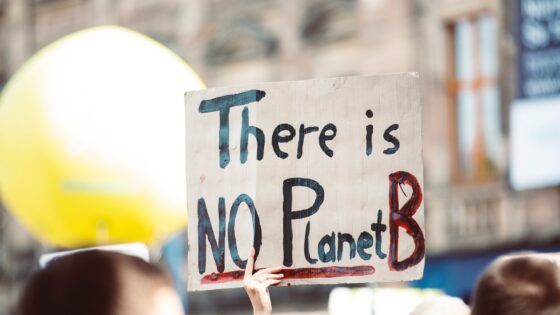
Food waste killing planet

No appetite for food waste
Privacy Overview
- Skip to main content
- Skip to FDA Search
- Skip to in this section menu
- Skip to footer links

The .gov means it’s official. Federal government websites often end in .gov or .mil. Before sharing sensitive information, make sure you're on a federal government site.
The site is secure. The https:// ensures that you are connecting to the official website and that any information you provide is encrypted and transmitted securely.
U.S. Food and Drug Administration
- Search
- Menu
- Resources for You (Food)
Food Loss and Waste
Social Media Toolkit Help spread the word to your followers and subscribers about the federal joint agency initiative to reduce food waste.
Food Waste Animations Check out animated videos that can help you take action to reduce food waste.
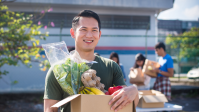
New FDA Food Code Reduces Barriers to Food Donations The FDA recently released 2022 Food Code helps reduce barriers to food donations by clarifying for the first time that food donations from retail food establishments are acceptable as long as proper food safety practices are followed.
Key Steps for Donating Food – For Retail Food Establishments
In the United States, food waste is estimated at between 30–40 percent of the food supply. This figure, based on estimates from USDA’s Economic Research Service of food loss at the retail and consumer levels, corresponded to approximately 133 billion pounds and $161 billion worth of food in 2010. Food is the single largest category of material placed in municipal landfills and represents wasted nourishment that could have helped feed families in need. Additionally, water, energy, and labor used to produce wasted food could have been employed for other purposes. Effectively reducing food waste will require cooperation among federal, state, tribal and local governments, faith-based institutions, environmental organizations, communities, consumers, and the entire supply chain.
Federal Interagency Collaboration
In 2018, the U.S. Department of Agriculture (USDA), the U.S. Environmental Protection Agency (EPA), and the U.S. Food and Drug Administration (FDA) signed a joint agency formal agreement aimed at improving coordination and communication across federal agencies attempting to better educate Americans on the impacts and importance of reducing food loss and waste. The agreement was renewed on December 17, 2020.
In 2019, the USDA, EPA and FDA issued its FY2019-2020 Federal Interagency Strategy .
In 2023, the USDA, EPA and FDA released a national strategy that will drive progress toward the national goal to reduce food loss and waste in the U.S. by 50% by 2030. This action is a continuation of the three agencies’ collaborative efforts to build a more sustainable future. The Draft National Strategy for Reducing Food Loss and Waste and Recycling Organic s identifies opportunities to reduce food loss and waste across the entire supply chain. The draft strategy features four objectives:
- Prevent the loss of food where possible.
- Prevent the waste of food where possible.
- Increase the recycling rate for all organic waste.
- Support policies that incentivize and encourage food loss and waste prevention and organics recycling.
For additional information, see Press Release: FDA, USDA and EPA Propose National Strategy to Reduce U.S. Food Loss and Waste and Recycling Organics .
Additional Activities
On April 9, 2019, USDA, EPA, and FDA signed a formal agreement with ReFED , Inc. to collaborate on efforts to reduce food waste in the United States. The agencies and ReFED agreed to develop approaches for measuring the success of food waste strategies, advance data collection and measurement efforts, and to participate as appropriate in the Further with Food: Center for Food Loss and Waste partnership, among other activities. The agreement was renewed in September 2021 and will remain in effect for three years.
The following are resources to help you do your part to reduce food loss and waste. You play a part in reaching the national food waste reduction goal – to reduce food waste by 50% by the year 2030.
Start using these tips today to reduce food waste, save money, and protect the environment.

Key Steps for Donating Food Information retail food establishments should keep in mind when donating food.
How to Cut Food Waste and Maintain Food Safety Learn how food waste and food safety are connected.
Tips to Reduce Food Waste Learn to reduce food waste at the grocery store or when eating out; in the kitchen while storing and preparing; at home while cooking, serving, and enjoying food with family and friends.
Food Waste Animated Videos Check out animated videos that can help you take action to reduce food waste.
Food Loss and Waste Social Media Toolkit Resources to help you spread the word about reducing food waste. Includes sample social media posts.
Infographics View infographics on a variety of food loss and waste related topics in the "Reducing Food Waste" tab.
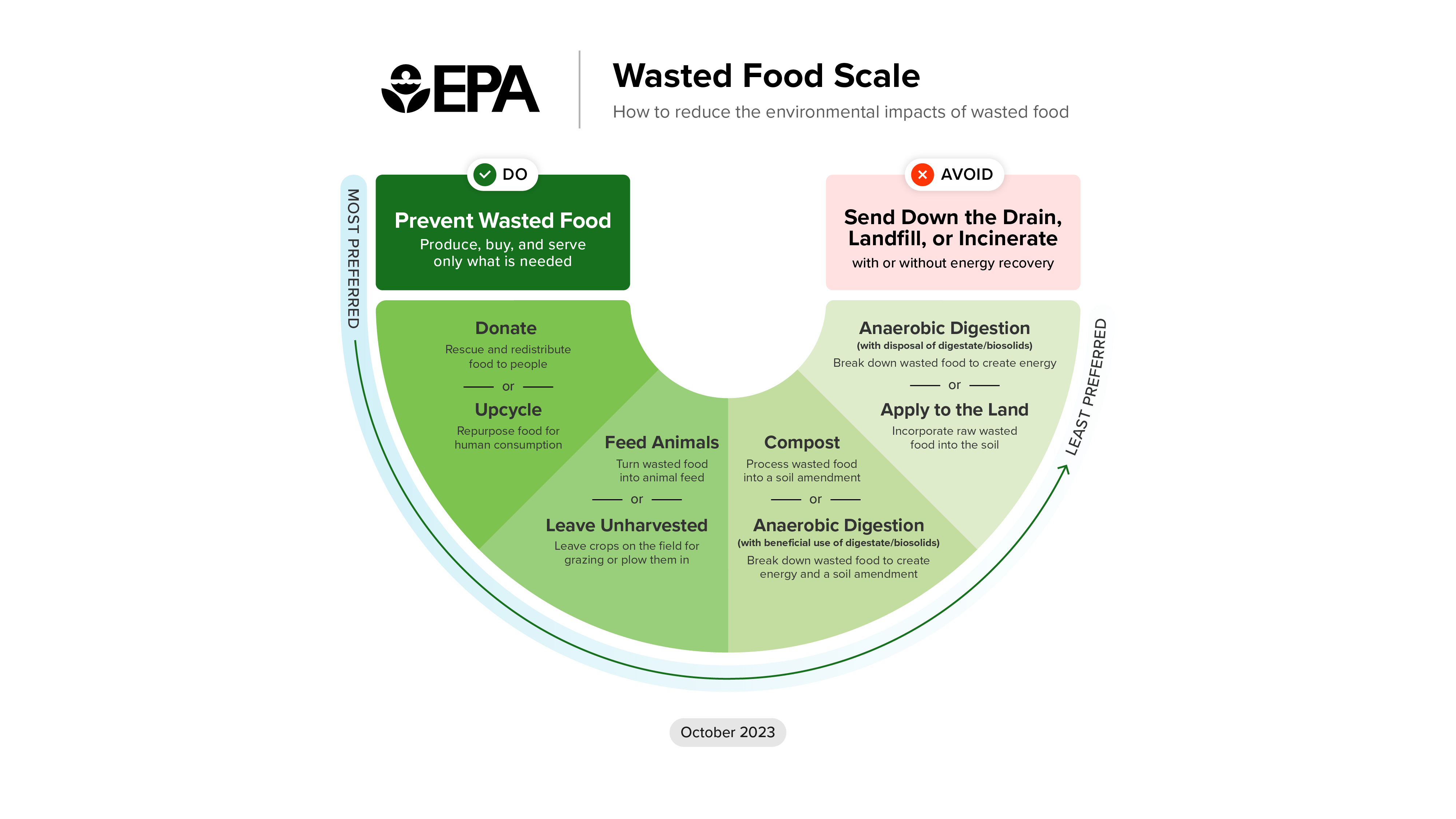
Wasted food is a growing problem in our modern society and an untapped opportunity. In 2018 alone, over 63 million tons of food waste were generated in the commercial, institutional, and residential sectors, with only 4 percent managed via composting. EPA estimates that more food reaches landfills than any other single material in our everyday trash, constituting 24 percent of municipal solid waste. EPA works with stakeholders throughout the food system to reduce waste through partnership, leadership and action.
Learn more about Sustainable Management of Food from EPA .
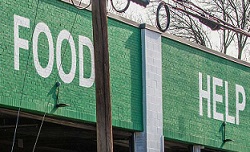
USDA is doing its part to help make preventing food waste the first-best option for farmers, businesses, organizations, and consumers. A large number of USDA programs contribute to this objective, ranging from those supporting market and distributional efficiencies to those educating consumers about safe food storage. Selected new and ongoing activities directly contributing to the reduction of food loss and waste are listed below.
Download the FoodKeeper App – The FoodKeeper app provides guidance on safe handling, preparation, and storage of more than 650 food and beverage items.
Watch USDA Food Loss and Waste Videos – USDA has a food loss and waste playlist in YouTube with Videos in English and Spanish.
Learn about USDA's Food Waste Activities .
- Newsletters
- News Insiders
Ottawa tourism partnering with food recovery organization to reduce waste
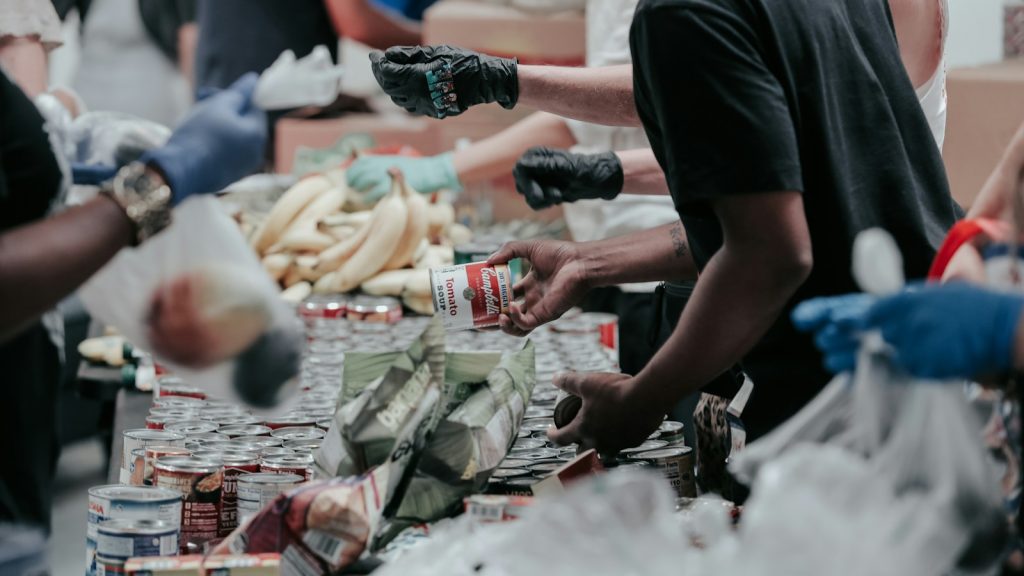
By Alex Black
Posted May 30, 2024 10:30:37 AM.
Last Updated May 30, 2024 10:30:43 AM.
Ottawa Tourism wants to reduce food waste in the National Capital Region.
In a release, Ottawa Tourism said it is partnering with La Tablée des Chefs, an organization that recovers surplus food for redistribution to community groups.
Together, the two organizations will spearhead the first destination-led program to maximize food recovery from the event sector in Canada.
The program offers venues that host large events a tool to help build relationships with local community organizations and provides a link to donate surplus food from events.
The role of La Tablée des Chefs will be to work closely with each donor and community organization to ensure a food recovery process that is sustainable, safe, organized, and easy to implement.
“We are really encouraged by Ottawa Tourism’s leadership in being the first Destination Organization to directly join our efforts to move the industry in the right direction,” Jean-François Archambault, Founder and CEO of La Tablée des Chefs, said. “Food waste is a real concern and I am happy to see we can turn this into something so positive for everyone involved.”
Ottawa Tourism also hopes the partnership will help raise awareness about food waste recovery and the importance of addressing food insecurity in communities.
“This partnership represents a significant step forward in our efforts to build a more resilient and sustainable tourism industry,” says Michael Crockatt, President and CEO of Ottawa Tourism. “We are proud to be joining forces with an organization as talented and thoughtful as La Tablée des Chefs, with whom we know we can make a meaningful impact on both environmental and social fronts, towards the broader wellbeing of our community.”
Interested organizations are invited to contact Ottawa Tourism to learn more about the movement.
Top Stories

Convicted B.C. serial killer Robert Pickton has died in hospital following an attack by another inmate in prison.

When Tara Cawley was driving her daughter to daycare she had to look twice at the large animal crossing the road in front of her van. At first, she thought it was a horse, but then she realized it was...
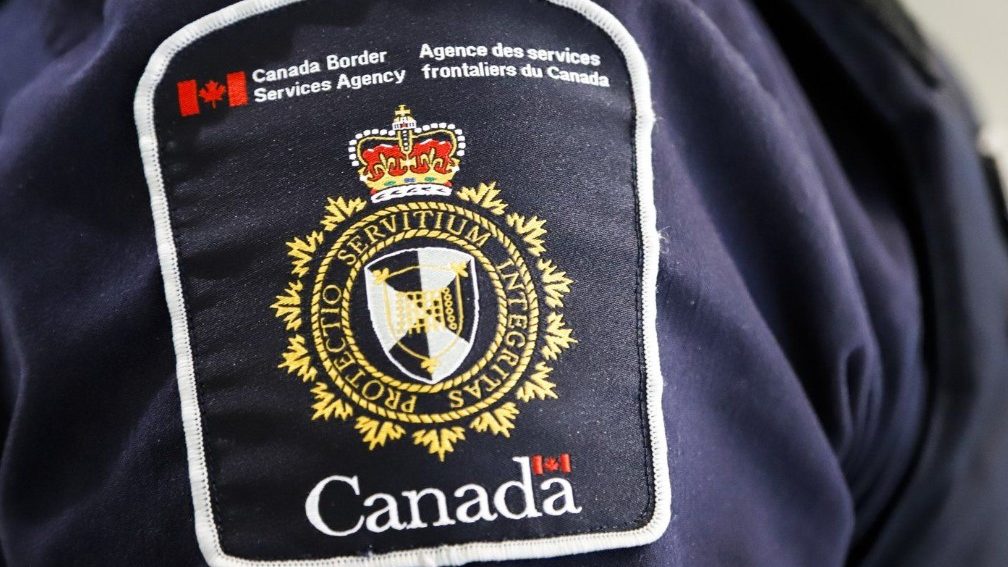
A man is charged with possession of child pornography, after a joint investigation by the Ottawa Police and Canada Border Services Agency (CBSA). A 53-year-old man from Ottawa was charged with importation...
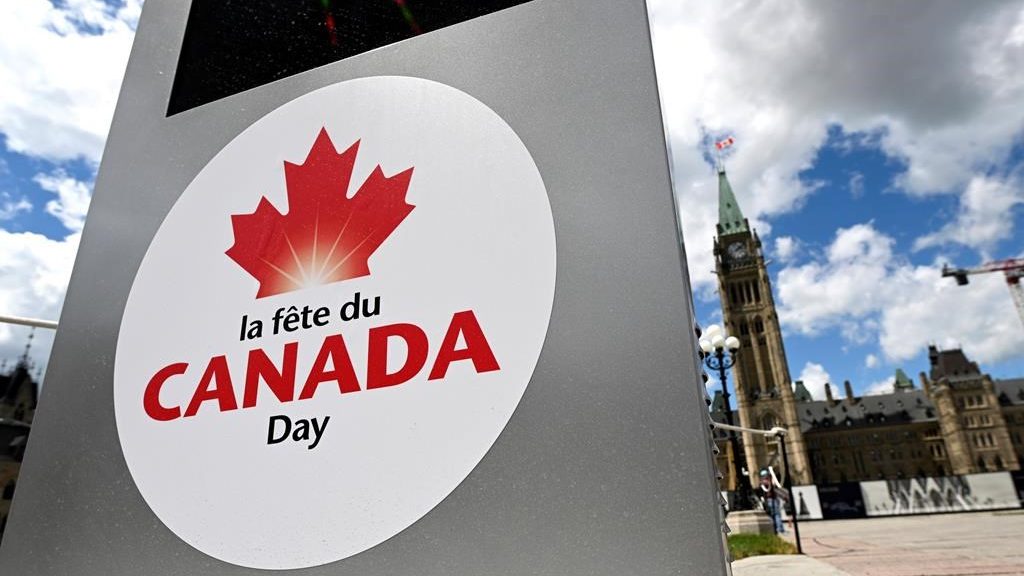
Canada Day programming in the National Capital Region has been unveiled, with July 1st celebrations set across Ottawa and Gatineau. From LeBreton Flats Park to Parliament Hill and Old Hull in Gatineau...
Most Watched Today

CityNews' Sports Reporter Lindsay Dunn spoke with Philip Kim about Breaking making its debut at the Paris Olympic Games and how he is favoured to win it all.

Ontario Premier Doug Ford suggested to reporters, without any evidence to date, that immigrants may be behind the shooting at an all-girls Jewish school in Toronto.

Residents in South Korea are being told to watch out for balloons filled with excrement and trash being sent over the border from North Korea.

Five more Ontario school boards and two private schools have joined the multibillion-dollar legal fight against Facebook, Instagram, TikTok and Snapchat, accusing them of leaving educators to manage the fallout from their allegedly addictive products

Moon Time Connections is overseeing the distribution of millions of period products to northern Indigenous Communities. Videographer Audra Brown with the importance of menstrual equity across the country.
Adjust preferences
With your consent we may collect cookies and information to enhance our service, and improve your experience.
These cookies and data are essential for browsing our website and allowing services. Examples include, session, authentication, and security cookies.
These cookies and data enable the website to provide enhanced functionality and personalized content.
These cookies and data inform us which pages are most informative and engaging via analytics.
These cookies may track data across websites for marketing and interest-based advertising to provide personalized content, offers, and advertisements.
Food waste is a huge problem. Here's how new innovations can help prevent it

Food waste accounts for around 30-40% of food produced in the United States, according to official statistics. Image: Unsplash/Joshua Hoehne
.chakra .wef-1c7l3mo{-webkit-transition:all 0.15s ease-out;transition:all 0.15s ease-out;cursor:pointer;-webkit-text-decoration:none;text-decoration:none;outline:none;color:inherit;}.chakra .wef-1c7l3mo:hover,.chakra .wef-1c7l3mo[data-hover]{-webkit-text-decoration:underline;text-decoration:underline;}.chakra .wef-1c7l3mo:focus,.chakra .wef-1c7l3mo[data-focus]{box-shadow:0 0 0 3px rgba(168,203,251,0.5);} Arlin Wasserman

.chakra .wef-1nk5u5d{margin-top:16px;margin-bottom:16px;line-height:1.388;color:#2846F8;font-size:1.25rem;}@media screen and (min-width:56.5rem){.chakra .wef-1nk5u5d{font-size:1.125rem;}} Get involved .chakra .wef-9dduvl{margin-top:16px;margin-bottom:16px;line-height:1.388;font-size:1.25rem;}@media screen and (min-width:56.5rem){.chakra .wef-9dduvl{font-size:1.125rem;}} with our crowdsourced digital platform to deliver impact at scale
- The food sector is a significant contributor to global greenhouse gas emissions, accounting for one-third of all emissions, according to the United Nations. Reducing food waste can play a crucial role in lowering these emissions.
- In regions dependent on local agriculture, food waste can emerge when producing food; in affluent areas with a global food supply chain, the issue lies more with consumer waste and inefficient food usage.
- Modern techniques, such as advanced drying food methods, are emerging as effective solutions to food waste. Companies are developing technologies to convert food scraps into nutritious flavours and supplements without using excessive heat.
Reducing the food sector’s carbon footprint is becoming increasingly urgent. The United Nations reports that the food sector is responsible for one-third of all greenhouse emissions, with other estimates ranging from 14% to 50% .
Most discussions on climate change and reducing carbon emissions invariably touch on food production. The same is true for the discourse around protecting biodiversity through ending deforestation and habitat conversion. So, it’s not surprising that the low-hanging fruit of food waste is often put high on the list of solutions.
The US Department of Agriculture reports that 30-40% of all our food is wasted, making food waste an obvious problem to tackle. If we figure out how to eat rather than waste a third of what we grow, then we’ll need to grow a third less. Suddenly, the environmental footprint measured in carbon emissions, water consumption or land conversion can go down by a third as well and we’ll have taken a massive bite out of just about every one of the world’s major environmental challenges.
If only it were that straightforward.
Have you read?
A surprising solution for reducing our food waste
7 innovative solutions for fighting food waste
A complex picture.
For the large part of the world that relies on local agriculture, food waste is a new label for hunger. About 30-40% of crops are wasted in many parts of the world that rely on the local harvest for food. Challenges that lead to such a high percentage of loss include pests, severe weather as crops mature and organizing people to pick the crops when they are ready. That last reason is unsurprising given that crops ripen on so many farms simultaneously, so there may be insufficient labour available at once.
Another major contributor to food loss is storage, including lack of refrigeration or infestation. Better organizing and managing farming, food storage, and distribution can reduce food loss and improve hunger. That solution has been known for many decades but isn’t so simple to implement.
The bigger challenge of storing food after the harvest has existed and has been considered for millennia. One of the first solutions was drying food. One of the more recent – refrigeration – is more widely used in affluent parts of the world and is often a better way to preserve nutrition and flavour than modern industrial drying food, where heating foods can destroy nutritional value. Depending on how heat is produced, this approach can offset the climate benefits of preventing food waste.
The food waste problem is very different in the more affluent parts of the world that rely on a global food supply chain to deliver ingredients from across the globe to hundreds of thousands of grocery stores and restaurants each day. Enough food shows up but we don’t eat all of it.
After several decades of analysis and hand-wringing, along with significant spending on applying metadata to supply chains, the solution to food waste is an update to one of the oldest techniques for preserving food: drying.
Reassessing food loss
The amount of food we don’t eat in the United States (and likely other less-studied industrialized countries) may not be as much as conventional wisdom tells us. While the US Environmental Protection Agency estimated food waste at over 30% in research dating back to 2010 , their reliance on a dietary study from the National Health and Nutrition Examination Survey (NHANES) – which notoriously underreports how much Americans really eat – exaggerated the problem.
Data from the U.S. Department of Agriculture , however, more clearly illustrates food intake amounts, indicating a substantial increase in the amount of food eaten in the United States compared with the share that is wasted, discarded or spoiled. Applying the NHANES methodology, I estimate the share of food produced in the United States that’s thrown away lies at about 20%.
Not all of the food we waste is avoidable. Despite our best efforts, there’s not much to be made out of bones, stems, peels, cores and other bits that aren’t all that digestible. Such parts make up between 4-11% of all the food produced , depending on how creative we get with our cooking.
Also, very little of what we buy actually ends up spoiling in our refrigerators, although having a bigger refrigerator can lead to throwing out more food. The timely reconsideration of how food companies calculate and use “sell by” and “use by” may also offer a near-term fix.
The rest of the food we waste – 10-15% of all food produced in the United States, according to my revised estimates – still represents a sizeable opportunity, although not as significant as shifting our diets towards lower carbon and water footprint ingredients. However, the food industry is talking about this opportunity a lot, in part because it’s easier than changing what they sell or how they make it.
Back in the kitchen, there are also some questions about whether or not all the extra ingredients, energy, time and money spent frying up kale stems or making chips out of chicken skin is worth it economically or environmentally.
However, a new application of an old technology may offer the first viable solution for storing and eating more of the harvest.
A fresh take on food preservation
New innovations by companies, such as GTF Technologies, can turn all sorts of food scraps, such as peels, rinds and husks, into digestible flour. Newer methods that avoid heat from baking or friction also preserve more nutritional value. Scraps can then be turned into new flavourings, nutritional supplements and shelf-stable ingredients.
Now, the simpler challenge is turning them into new and delicious food products that help solve food waste with much less effort than pickling carrot tops or deep-frying fish scales.
With this new focus on turning natural, whole food flours and powdered nutritional supplements and flavourings into new food products, we have, according to my estimates, the potential to reduce the food sector’s environmental footprint by about 10-15%, creating a shelf-stable inventory of foods to aid hunger relief and turning waste into profit.
That is palatable news as the industry charts a path for reducing its environmental impact and getting more from the harvest.
Don't miss any update on this topic
Create a free account and access your personalized content collection with our latest publications and analyses.
License and Republishing
World Economic Forum articles may be republished in accordance with the Creative Commons Attribution-NonCommercial-NoDerivatives 4.0 International Public License, and in accordance with our Terms of Use.
The views expressed in this article are those of the author alone and not the World Economic Forum.
The Agenda .chakra .wef-n7bacu{margin-top:16px;margin-bottom:16px;line-height:1.388;font-weight:400;} Weekly
A weekly update of the most important issues driving the global agenda
.chakra .wef-1dtnjt5{display:-webkit-box;display:-webkit-flex;display:-ms-flexbox;display:flex;-webkit-align-items:center;-webkit-box-align:center;-ms-flex-align:center;align-items:center;-webkit-flex-wrap:wrap;-ms-flex-wrap:wrap;flex-wrap:wrap;} More on Food and Water .chakra .wef-17xejub{-webkit-flex:1;-ms-flex:1;flex:1;justify-self:stretch;-webkit-align-self:stretch;-ms-flex-item-align:stretch;align-self:stretch;} .chakra .wef-nr1rr4{display:-webkit-inline-box;display:-webkit-inline-flex;display:-ms-inline-flexbox;display:inline-flex;white-space:normal;vertical-align:middle;text-transform:uppercase;font-size:0.75rem;border-radius:0.25rem;font-weight:700;-webkit-align-items:center;-webkit-box-align:center;-ms-flex-align:center;align-items:center;line-height:1.2;-webkit-letter-spacing:1.25px;-moz-letter-spacing:1.25px;-ms-letter-spacing:1.25px;letter-spacing:1.25px;background:none;padding:0px;color:#B3B3B3;-webkit-box-decoration-break:clone;box-decoration-break:clone;-webkit-box-decoration-break:clone;}@media screen and (min-width:37.5rem){.chakra .wef-nr1rr4{font-size:0.875rem;}}@media screen and (min-width:56.5rem){.chakra .wef-nr1rr4{font-size:1rem;}} See all

Frugal innovation: 3 principles to help improve food production
Navi Radjou
May 29, 2024

5 ways that free trade can boost sustainable agriculture in Africa
Adam Amoussou
May 21, 2024

The Horn of Africa's deep groundwater could be a game-changer for drought resilience
Bradley Hiller, Jude Cobbing and Andrew Harper
May 16, 2024

These are the innovators driving impact in future food systems
Noopur Desai
May 13, 2024

Cathrine Jansson-Boyd
May 8, 2024

Leveraging technology and innovation to transform food systems
May 6, 2024

- 6 hours ago
Why did the hotel chain hire a marine biologist?

By Elisabeth Goodridge
Carbon neutrality, zero waste and serving seafood solely from responsible suppliers: Many boutique eco-tourism destinations — particularly those catering to small numbers of luxury travelers — can reach or come close to sustainability goals such as these, but what about a decades-old resort company operating 97 properties across 14 countries?
As the global director of sustainability at Iberostar Group, Megan Morikawa is striving to prove that large travel operators can be better stewards of the planet. The Stanford-educated marine biologist is applying science to achieve these goals and more, such as helping the privately held hospitality company build coral research labs and use artificial intelligence-powered trash cans to reduce kitchen waste.
In a nearly two-hour video conversation, Morikawa talked about her career pivot from academia to hospitality, the importance of collaboration across the travel industry and her new role for the Travel Foundation, a nonprofit providing destinations with sustainable-tourism research, strategy and training.
This conversation has been edited and condensed for clarity.
Q: What led you to research coral reef die-offs for your doctorate?
A: Basically, the theme of my technical background is how we can use the technology of genetics and genomics to better conserve species on the planet.
My Ph.D. adviser, Stephen Palumbi, was focused on genetics, genomics and coral reefs. His whole proposition was: Could we find the world’s toughest corals, learn what makes them tough and use that to help predict winners and losers of climate change, so that managers could better understand how to restore reefs?
Q: How did you end up in travel?
A: It was at the end of my Ph.D. when at Stanford I met Gloria Fluxá Thienemann, Iberostar’s vice chair and chief sustainability officer. My adviser and I were scratching our heads asking, “What does a Spanish hotel owner have in terms of interest in our research?”
Our initial conversation showed that she was genuinely interested in the science. Gloria’s passion for the science of the oceans has facilitated so much of what we now do.
I moved from academia to Iberostar because really passionate people want to use the private sector to scale solutions for critical ecosystems, like coral reefs.
Q: Iberostar now has three coral labs and seven underwater nurseries in three countries. How did that start?
A: The first year that I joined, we constructed our first coral lab at a property in the Dominican Republic. It would have taken us four or five years if we were doing this from an academic standpoint.
The coral lab is three things in one. It’s an outreach center, where guests and others can pop in and stumble upon seeing — for many of them — coral for the first time. But it’s also a genetic bank: Corals in the Caribbean are experiencing a lot of challenges, like widespread disease and bleaching events. Having a genetic bank is an important asset saving for genetic diversity. Our third objective is to recreate coral bleaching: The lab has a sophisticated system that recreates heating waves with small tanks so that we can stress individual corals, and predict winners and losers, just like I did for my Ph.D.
Q: Iberostar has taken hotels off fossil fuels, partnered to create a waste-management system in Brazil and more. How is it making these changes?
A: The question is always around how you scale sustainability. Scaling is an interesting combination of being able to speak in a high-level strategy voice about say, business objectives, and then being able to translate that down to the actual actions that a hotel director needs to take.
Because it’s not just our executive leadership. From our operations to our procurement team to our head of human resources, we all recognize the risk climate change poses to our business. So the passion and enthusiasm to do something about it is there and was not what needed to be sparked.
Q: Tell me about these trash cans.
A: We do a lot of work on our food waste — we serve around 45 million meals a year.
With our partnership with Winnow, an AI waste management company, we have placed devices in our kitchens that have an AI-assisted camera and scale that allows for chefs to spend the first month or so training the model on what the camera is seeing. Through time, the system automatically registers what is being wasted.
With that data, we can get feedback on those economic losses as well as carbon footprint losses. And finally, what is it that we are throwing away? And how can that help us to inform how we produce food the next day?
Q: What are the top challenges to Iberostar’s sustainability goals?
A: Travel is made up of a bunch of different businesses in different sectors. And how that all joins together can be really difficult to understand — particularly in the role we all play in protecting natural resources. Because we are a beachfront resort company, when we see erosion and other impacts on those areas, it’s really clear and evident. But one of our excursion providers might not be thinking about it as much in their day-to-day.
As a scientist, I recognize that a lot of discovery of how to do things that have never been done before requires quick absorption of new materials and being able to speak multiple languages. And by that, I don’t mean linguistic languages; I mean speaking from a research standpoint to a government standpoint to a business standpoint. A lot of the barrier to collaboration was not being able to communicate effectively with each other.
Q: Are any of these changes something a guest would see?
A: We somewhat boldly said we are demonstrating that a luxury hospitality experience does not require single-use plastics. What I like to say is that when you see a room that is free of single-use plastics, it’s kind of hard to unsee it. A lot of times it can be thought of — initially — as needing to remove items. But I think our operations team thought critically about ways to elegantly offer an experience that was a better product. So that’s probably the most tangible way that we can see that.
Q: What is the purpose of the Travel Foundation?
A: The Travel Foundation is a U.K.-based NGO, providing research, strategy and support in their aim for tourism to provide the greatest benefits for every destination around the world, so local communities and environments can thrive. The role I’ve taken is chair of the board of trustees.
A recent research piece they published was looking at how to model pathways to reach net zero emissions, looking at aviation, transport and hotels. The Travel Foundation also supports destinations in producing management plans. For Lake Tahoe, in California, they’ve been doing great work to help the area think through its new boom in tourism and how residents can have a voice.
Q: When it comes to changing human impact on the environment, what are steps that travelers could take?
A: One of the best things that tourists can do is to inject mindfulness into their decisions. I know it sounds really silly, but the more meaning that we draw from the choices that we make in our consumption, the more likely we’re able to maximize the value that comes from it and make them memorable experiences.
Recent Posts
Fasten your seat belts: What you need to know about turbulence
Did you make your connecting flight? You may have AI to thank.
Paris promised the Olympics would be accessible. The clock is ticking.
Travel, Tourism & Hospitality
Global tourism industry - statistics & facts
What are the leading global tourism destinations, digitalization of the global tourism industry, how important is sustainable tourism, key insights.
Detailed statistics
Total contribution of travel and tourism to GDP worldwide 2019-2033
Number of international tourist arrivals worldwide 1950-2023
Global leisure travel spend 2019-2022
Editor’s Picks Current statistics on this topic
Leading global travel markets by travel and tourism contribution to GDP 2019-2022
Travel and tourism employment worldwide 2019-2033
Further recommended statistics
- Basic Statistic Total contribution of travel and tourism to GDP worldwide 2019-2033
- Basic Statistic Travel and tourism: share of global GDP 2019-2033
- Basic Statistic Leading global travel markets by travel and tourism contribution to GDP 2019-2022
- Basic Statistic Global leisure travel spend 2019-2022
- Premium Statistic Global business travel spending 2001-2022
- Premium Statistic Number of international tourist arrivals worldwide 1950-2023
- Basic Statistic Number of international tourist arrivals worldwide 2005-2023, by region
- Basic Statistic Travel and tourism employment worldwide 2019-2033
Total contribution of travel and tourism to gross domestic product (GDP) worldwide in 2019 and 2022, with a forecast for 2023 and 2033 (in trillion U.S. dollars)
Travel and tourism: share of global GDP 2019-2033
Share of travel and tourism's total contribution to GDP worldwide in 2019 and 2022, with a forecast for 2023 and 2033
Total contribution of travel and tourism to GDP in leading travel markets worldwide in 2019 and 2022 (in billion U.S. dollars)
Leisure tourism spending worldwide from 2019 to 2022 (in billion U.S. dollars)
Global business travel spending 2001-2022
Expenditure of business tourists worldwide from 2001 to 2022 (in billion U.S. dollars)
Number of international tourist arrivals worldwide from 1950 to 2023 (in millions)
Number of international tourist arrivals worldwide 2005-2023, by region
Number of international tourist arrivals worldwide from 2005 to 2023, by region (in millions)
Number of travel and tourism jobs worldwide from 2019 to 2022, with a forecast for 2023 and 2033 (in millions)
- Premium Statistic Global hotel and resort industry market size worldwide 2013-2023
- Premium Statistic Most valuable hotel brands worldwide 2023, by brand value
- Basic Statistic Leading hotel companies worldwide 2023, by number of properties
- Premium Statistic Hotel openings worldwide 2021-2024
- Premium Statistic Hotel room openings worldwide 2021-2024
- Premium Statistic Countries with the most hotel construction projects in the pipeline worldwide 2022
Global hotel and resort industry market size worldwide 2013-2023
Market size of the hotel and resort industry worldwide from 2013 to 2022, with a forecast for 2023 (in trillion U.S. dollars)
Most valuable hotel brands worldwide 2023, by brand value
Leading hotel brands based on brand value worldwide in 2023 (in billion U.S. dollars)
Leading hotel companies worldwide 2023, by number of properties
Leading hotel companies worldwide as of June 2023, by number of properties
Hotel openings worldwide 2021-2024
Number of hotels opened worldwide from 2021 to 2022, with a forecast for 2023 and 2024
Hotel room openings worldwide 2021-2024
Number of hotel rooms opened worldwide from 2021 to 2022, with a forecast for 2023 and 2024
Countries with the most hotel construction projects in the pipeline worldwide 2022
Countries with the highest number of hotel construction projects in the pipeline worldwide as of Q4 2022
- Premium Statistic Airports with the most international air passenger traffic worldwide 2022
- Premium Statistic Market value of selected airlines worldwide 2023
- Premium Statistic Global passenger rail users forecast 2017-2027
- Premium Statistic Daily ridership of bus rapid transit systems worldwide by region 2023
- Premium Statistic Number of users of car rentals worldwide 2019-2028
- Premium Statistic Number of users in selected countries in the Car Rentals market in 2023
- Premium Statistic Carbon footprint of international tourism transport worldwide 2005-2030, by type
Airports with the most international air passenger traffic worldwide 2022
Leading airports for international air passenger traffic in 2022 (in million international passengers)
Market value of selected airlines worldwide 2023
Market value of selected airlines worldwide as of May 2023 (in billion U.S. dollars)
Global passenger rail users forecast 2017-2027
Worldwide number of passenger rail users from 2017 to 2022, with a forecast through 2027 (in billion users)
Daily ridership of bus rapid transit systems worldwide by region 2023
Number of daily passengers using bus rapid transit (BRT) systems as of April 2023, by region
Number of users of car rentals worldwide 2019-2028
Number of users of car rentals worldwide from 2019 to 2028 (in millions)
Number of users in selected countries in the Car Rentals market in 2023
Number of users in selected countries in the Car Rentals market in 2023 (in million)
Carbon footprint of international tourism transport worldwide 2005-2030, by type
Transport-related emissions from international tourist arrivals worldwide in 2005 and 2016, with a forecast for 2030, by mode of transport (in million metric tons of carbon dioxide)
Attractions
- Premium Statistic Leading museums by highest attendance worldwide 2019-2022
- Basic Statistic Most visited amusement and theme parks worldwide 2019-2022
- Basic Statistic Monuments on the UNESCO world heritage list 2023, by type
- Basic Statistic Selected countries with the most Michelin-starred restaurants worldwide 2023
Leading museums by highest attendance worldwide 2019-2022
Most visited museums worldwide from 2019 to 2022 (in millions)
Most visited amusement and theme parks worldwide 2019-2022
Leading amusement and theme parks worldwide from 2019 to 2022, by attendance (in millions)
Monuments on the UNESCO world heritage list 2023, by type
Number of monuments on the UNESCO world heritage list as of September 2023, by type
Selected countries with the most Michelin-starred restaurants worldwide 2023
Number of Michelin-starred restaurants in selected countries and territories worldwide as of July 2023
Online travel market
- Premium Statistic Online travel market size worldwide 2017-2028
- Premium Statistic Estimated desktop vs. mobile revenue of leading OTAs worldwide 2023
- Premium Statistic Number of aggregated downloads of leading online travel agency apps worldwide 2023
- Basic Statistic Market cap of leading online travel companies worldwide 2023
- Premium Statistic Estimated EV/Revenue ratio in the online travel market 2024, by segment
- Premium Statistic Estimated EV/EBITDA ratio in the online travel market 2024, by segment
Online travel market size worldwide 2017-2028
Online travel market size worldwide from 2017 to 2023, with a forecast until 2028 (in billion U.S. dollars)
Estimated desktop vs. mobile revenue of leading OTAs worldwide 2023
Estimated desktop vs. mobile revenue of leading online travel agencies (OTAs) worldwide in 2023 (in billion U.S. dollars)
Number of aggregated downloads of leading online travel agency apps worldwide 2023
Number of aggregated downloads of selected leading online travel agency apps worldwide in 2023 (in millions)
Market cap of leading online travel companies worldwide 2023
Market cap of leading online travel companies worldwide as of September 2023 (in million U.S. dollars)
Estimated EV/Revenue ratio in the online travel market 2024, by segment
Estimated enterprise value to revenue (EV/Revenue) ratio in the online travel market worldwide as of April 2024, by segment
Estimated EV/EBITDA ratio in the online travel market 2024, by segment
Estimated enterprise value to EBITDA (EV/EBITDA) ratio in the online travel market worldwide as of April 2024, by segment
Selected trends
- Premium Statistic Global travelers who believe in the importance of green travel 2023
- Premium Statistic Sustainable initiatives travelers would adopt worldwide 2022, by region
- Premium Statistic Airbnb revenue worldwide 2017-2023
- Premium Statistic Airbnb nights and experiences booked worldwide 2017-2023
- Premium Statistic Technologies global hotels plan to implement in the next three years 2022
- Premium Statistic Hotel technologies global consumers think would improve their future stay 2022
Global travelers who believe in the importance of green travel 2023
Share of travelers that believe sustainable travel is important worldwide in 2023
Sustainable initiatives travelers would adopt worldwide 2022, by region
Main sustainable initiatives travelers are willing to adopt worldwide in 2022, by region
Airbnb revenue worldwide 2017-2023
Revenue of Airbnb worldwide from 2017 to 2023 (in billion U.S. dollars)
Airbnb nights and experiences booked worldwide 2017-2023
Nights and experiences booked with Airbnb from 2017 to 2023 (in millions)
Technologies global hotels plan to implement in the next three years 2022
Technologies hotels are most likely to implement in the next three years worldwide as of 2022
Hotel technologies global consumers think would improve their future stay 2022
Must-have hotel technologies to create a more amazing stay in the future among travelers worldwide as of 2022
- Premium Statistic Travel and tourism revenue worldwide 2019-2028, by segment
- Premium Statistic Distribution of sales channels in the travel and tourism market worldwide 2018-2028
- Premium Statistic Inbound tourism visitor growth worldwide 2020-2025, by region
- Premium Statistic Outbound tourism visitor growth worldwide 2020-2025, by region
Travel and tourism revenue worldwide 2019-2028, by segment
Revenue of the global travel and tourism market from 2019 to 2028, by segment (in billion U.S. dollars)
Distribution of sales channels in the travel and tourism market worldwide 2018-2028
Revenue share of sales channels of the travel and tourism market worldwide from 2018 to 2028
Inbound tourism visitor growth worldwide 2020-2025, by region
Inbound tourism visitor growth worldwide from 2020 to 2022, with a forecast until 2025, by region
Outbound tourism visitor growth worldwide 2020-2025, by region
Outbound tourism visitor growth worldwide from 2020 to 2022, with a forecast until 2025, by region
Further reports
Get the best reports to understand your industry.
Mon - Fri, 9am - 6pm (EST)
Mon - Fri, 9am - 5pm (SGT)
Mon - Fri, 10:00am - 6:00pm (JST)
Mon - Fri, 9:30am - 5pm (GMT)
- Bahasa Indonesia
- Slovenščina
- Science & Tech
- Russian Kitchen
7 signature delicacies from Moscow Region (PHOTOS)

1. Kolomna pastila

The town of Kolomna 90 km south-east of Moscow has always had many sour apples of the ‘Antonovka’ variety. And the locals invented pastila, a kind of jelly fruit confectionery, made from apples with honey or sugar. After the 1917 Bolshevik Revolution, this traditional candy was almost forgotten. In Soviet times, they called a kind of marshmallow from egg whites and sugar a 'pastila'. But, in the early 21st century, enthusiasts from Kolomna revived production of pastila according to traditional recipes. Now, everyone buys some as a souvenir to take home.
2. Kolomna ‘ kalach ’

‘Kalach’ is a very ancient Russian street food. One should never eat the ‘handle’ (because, in the past, most people held it with dirty hands). So, thanks to this tradition, a proverb appeared in the Russian language: “Reach the handle” , meaning to get into an extremely difficult, almost hopeless situation. When you are even willing to eat the kalach's handle, metaphorically speaking.
And Kolomna is famous not only for its pastila, but also its ‘kalach’. In the 18th century, people began to add stuffing into it, thus turning it into a sandwich of sorts. And now, in Kolomna, you can try a ‘kalach’ with stewed goose, for example!
3. Zaraisk ‘ kovrizhka ’
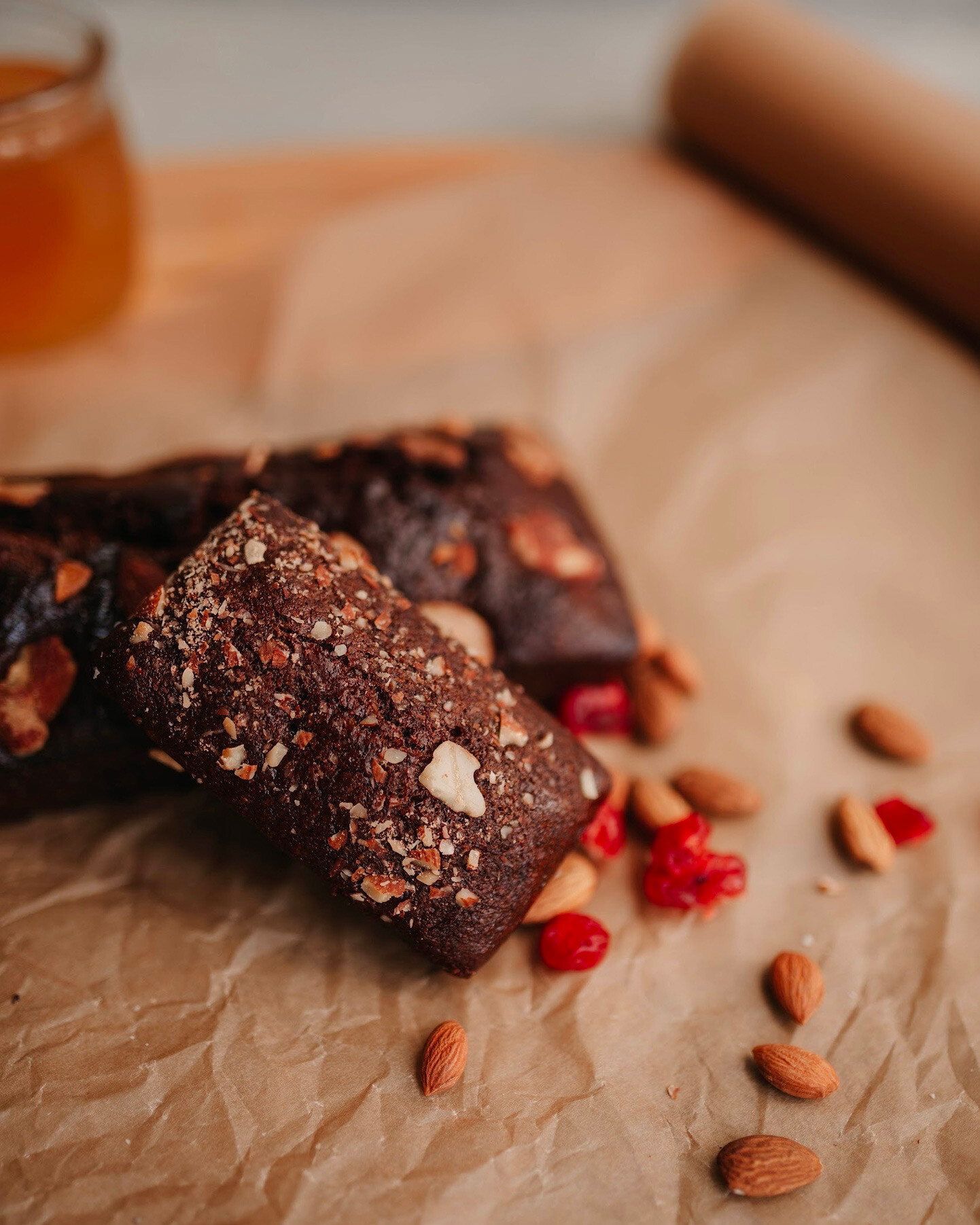
‘Kovrizhka’ is a kind of honey pastry, a flat bread with spices and it has been made in Russia since the ancient times. The delicacy was especially popular in Zaraisk, a town 180 km south-east of Moscow. Lots of merchants from all over the country traveled though Zaraisk, so trade and dining was quite active there. This meant that there were always a lot of apiaries and mills and, therefore, plenty of honey and flour.
The Zaraisk ‘kovrizhka’ has been known since the 19th century and, in 2018, the forgotten craft was revived by local residents. Now, you can try a ‘kovrizhka’ with honey and various spices (and even black pepper!) in the first Russian ‘kovrizhka cafe, not far from the Zaraisk Kremlin.
4. Dmitrov gingerbread

The city of Tula is actually most famous for its gingerbread. However, this treat was made everywhere in Russia. In the town of Dmitrov, 80 north of Moscow, they baked “printed” gingerbread, which was shaped with the help of special wooden molds. Old gingerbread boards have been preserved in the museum of the Dmitrov Kremlin.
Even today, gingerbread with fruit filling is baked in Dmitrov and, every year, the ‘Dmitrov Gingerbread Festival’ is held, where everyone can learn how to make this native Russian treat at special master classes.
5. Lukhovitsy cucumbers
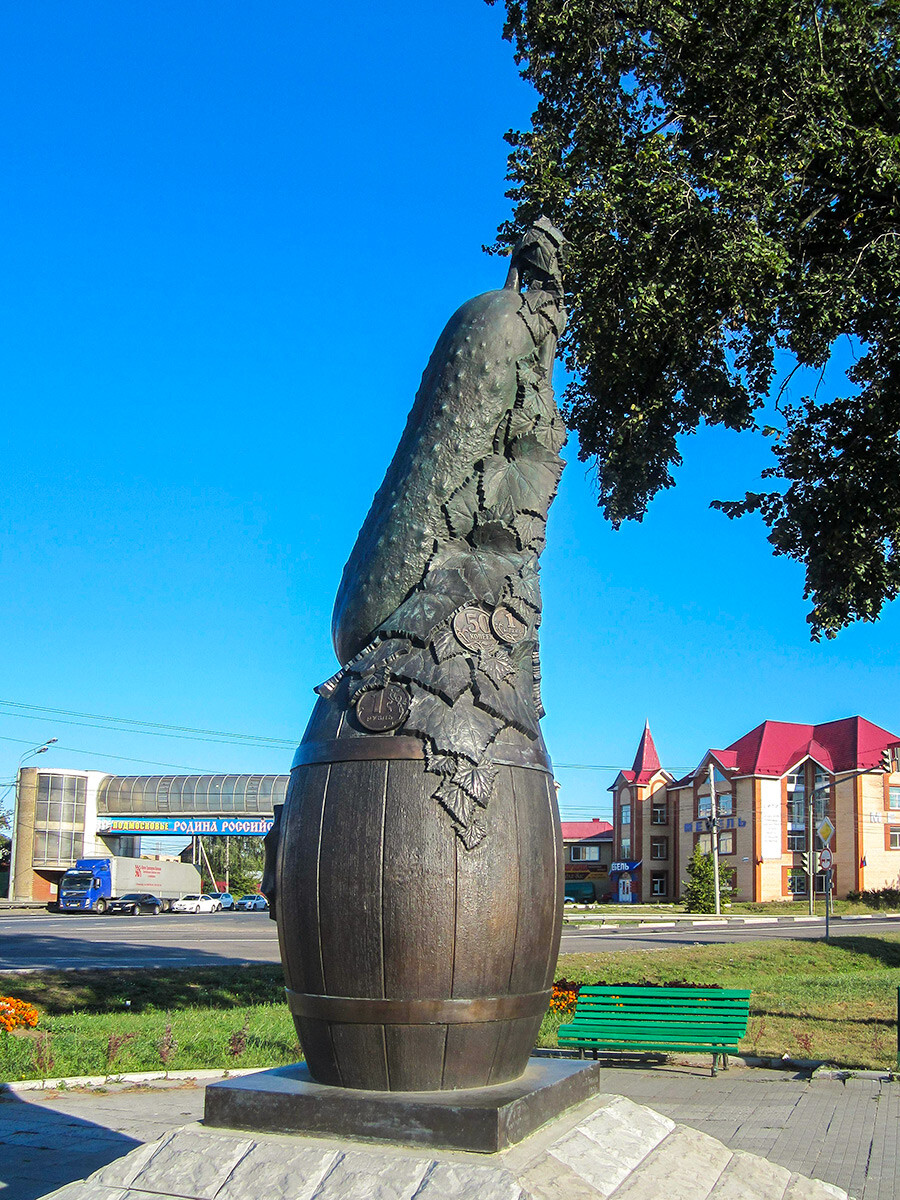
Since the 1930s, residents of the town of Lukhovitsy, 135 km south-east of Moscow, are collectively engaged with one task - collecting cucumbers. Thanks to the fruitful soil on these lands in the floodplain of the Oka River, cucumbers grow actively and end up very delicious. Anyone who has ever traveled along the highway from Moscow to Ryazan can attest to seeing locals selling cucumbers right along the road, all incredibly beautiful and at ridiculously low prices. In Lukhovitsy, there is even a monument dedicated to the cucumber with the inscription: “To the bread winning cucumber from the grateful citizens of Lukhovitsy!”
6. Podolsk ‘Podolchanka’ candy

In the 1960s, Alexei Kosygin, Chairman of the Council of Ministers of the USSR, paid an official visit to the U.S. And there, he tried some sugar paste candy, which he liked a lot! So, he brought a sample back home and the Institute of Confectionery Industry tried to unravel the recipe and create its own candy based on it. So, in 1972, the confectionery factory in the town of Podolsk, 45 km south of Moscow, produced the first series of ‘Podolchanka’ (literally 'female citizen of Podolsk') candies.The glazed fondant and cream candies are still produced there and their taste is known throughout the country.
7. Serpukhov fudge

The recipe for this sweet treat was invented by a rich merchant named Anna Maraeva, who owned weaving factories in the town of Serpukhov, 100 km south of Moscow. She had eight children and all of them loved candy, so she created a creamy honey fudge for them. There is a legend that, during World War I, there was a hospital for the wounded right in building of her factory. And the soldiers were fed exactly this calorie-laden fudge, so that they could recover faster. Due to the advent of cheap sugar, the ancient recipe was abandoned in the Soviet times; but, today, Serpukhov has revived production according to the traditional recipe.
Dear readers,
Our website and social media accounts are under threat of being restricted or banned, due to the current circumstances. So, to keep up with our latest content, simply do the following:
- Subscribe to our Telegram channel
- Subscribe to our weekly email newsletter
- Enable push notifications on our website
- Install a VPN service on your computer and/or phone to have access to our website, even if it is blocked in your country
If using any of Russia Beyond's content, partly or in full, always provide an active hyperlink to the original material.
to our newsletter!
Get the week's best stories straight to your inbox
- 7 most WEIRD Russian eating habits
- Tsar-level shopping: St. Petersburg’s most beautiful stores (PHOTOS)
- 10 popular Russian gastronomic delights (according to Russia Beyond readers)
This website uses cookies. Click here to find out more.

IMAGES
VIDEO
COMMENTS
The Roadmap sets out how the tourism sector can contribute to the achievement of target 12.3 of the Sustainable Development Goals (SDGs), which aims at halving food waste globally by 2030. It provides an action framework to accelerate food waste reduction in tourism, sharing practical insights and guidance for the sector .
Indeed, the tourism industry is facing ever-growing economical, societal and legislative reasons to address food waste. Today's tourism is not limited to package travel and hotel stays, thanks to ...
Tourism businesses are encouraged to reduce the amount of waste they generate and improve their waste disposal practices where waste cannot be avoided (Global Sustainable Tourism Council, 2012). Critically important to achieving progress in this area is the availability of industry benchmarks on waste volume and waste patterns, which allows the ...
Furthermore, with the increasing trend of out-of-home dining, spurred by growth in incomes and tourism, hospitality waste has become a significant issue for both developed and developing countries (Wang et al., 2017). ... Food waste in the Swiss food service industry - magnitude and potential for reduction. Waste Manag., 35 (2015) ...
One of the significant problems of planet Earth is related to food production and consumption. This paper evaluates the role of the tourism sector in generating food waste as well as its potential to drive sustainability. Tackling food loss and waste is acknowledged as urgent, both for the people and the planet. Food waste is particularly problematic in industrialised regions, impeding the ...
The Roadmap sets out how the tourism sector can contribute to the achievement of target 12.3. of the Sustainable Development Goals (SDGs) which aims at halving global food waste by 2030. It provides an action framework to accelerate food waste reduction in tourism, sharing practical insights and guidance for the sector, with a particular focus ...
The Roadmap encourages and provides recommendations for tourism stakeholders to: Target: Set the ambition by identifying a food waste reduction target; Measure: Measure in a consistent way to be able to track progress; Act: Take action to reduce their own food waste, work in partnership with suppliers and help guests reduce their food waste; and
2.2.1 Existing data suggests that food waste in tourism is a significant issue 21 2.2.2 The economic, environmental and social reasons for addressing food waste ... Clara Randulfe, Ministry of Industry, Trade and Tourism, Spain Linden Coppell, MSC Cruises Christopher Warren, 10. The .
Food waste is a major environmental, social and economic issue. Indeed, the tourism industry is facing ever-growing economical, societal and legislative reasons to address food waste.
For all waste the 155 calculation is a reduction of 1,220 tonnes. 156 • Recycling of all waste increased from 27% (2009) to 90% (2021) 157 • Vegetable production increased from $16,000 a year (2011) to $200,000 158 (2021). 159 • Waste-to-Wealth has generated $3 million in total.
Tourism is recognized as the strategic industry to reduce food waste. In order to do so, it is crucial that all sources and amounts of food waste being produced in the tourism industry are properly understood. Although the health crisis will likely outgrow the environmental concerns at the moment, tourism businesses need to rethink investment ...
The Global Roadmap for Food Waste Reduction in Tourism is a new framework that aims at promoting the uptake of food waste reduction strategies by tourism stakeholders to enhance the contribution of the sector to sustainable food systems. The Roadmap supports the implementation of SDG12.3 and aims to raise awareness among tourism stakeholders of ...
Which.co.uk estimates that the hospitality and food service industry creates 18% of all annual food waste, and a study found that a hotel in Bangkok wasted an astonishing 1.3 tons of edible food in a single week. The implications of food waste in tourism and hospitality. Food waste takes many forms.
In tourism, food is more than nourishment and extends to visitor experiences and attractions. Yet food waste arising from tourism activity is a major environmental and societal issue. Festive moods and holiday spirits - synonymous with over-sized portions, bountiful buffets and entertainment excess - exacerbate food waste.
Despite the concerns about food waste in the hospitality industry have been frequently revealed in the media, in the UAE and globally (Dhir et al., 2020; Zamri et al., 2020), insufficient attention has been paid to this phenomenon by academic in the tourism and hospitality industry (Filimonau & De Coteau, 2019). Our critical review of the ...
Fleetwide rollout of the Leanpath system began last year, and all told, six ships prevented about 29,000 pounds of food from going to waste, averting nearly 100 tons of carbon emissions. The river ...
WWF's USA: Reducing Food Waste in Hotels - This article gives an overview of the food waste problem in hotels and solutions several hotels are using to mitigate it. Right now, food awareness and waste is a passing thought for many people. It can't be a passing thought any longer in the tourism industry.
A staggering 1.3 billion tons of food is wasted annually, and food 'has been identified as the most prominent type of hospitality waste'. The researchers say that to cut the amount stemming from tourism, it is vital all sources and amounts being produced by the industry is properly understood. They are also calling for more work to be ...
They include, for instance, wildlife resources , cross-border natural resources management for the purpose of tourism , food-environment-hospitality relationships , environmental state of important touristic locations and geographical domains [26,27,28], and the state governance of nature-based tourism . Nonetheless, it is hoped that the ...
The following are resources to help you do your part to reduce food loss and waste. You play a part in reaching the national food waste reduction goal - to reduce food waste by 50% by the year 2030.
Ottawa Tourism wants to reduce food waste in the National Capital Region. In a release, Ottawa Tourism said it is partnering with La Tablée des Chefs, an organization that recovers surplus food for redistribution to community groups. Together, the two organizations will spearhead the first destination-led program to maximize food recovery from ...
Users can analyze the food waste components and the quantity, cost and source of waste. Martin-Rios et al. (2021) reported that the use of Kitro devices was associated with an average reduction of avoidable food waste in hotels, restaurants and cafés in Switzerland of up to 60%, 50% and 40%, respectively. 3. Methodology3.1. Study area
Arlin Wasserman. The food sector is a significant contributor to global greenhouse gas emissions, accounting for one-third of all emissions, according to the United Nations. Reducing food waste can play a crucial role in lowering these emissions. In regions dependent on local agriculture, food waste can emerge when producing food; in affluent ...
Morikawa is applying science — and scale — to eliminate food waste, save coral and collaborate across the travel industry to cut carbon. (Iberostar via The New York Times)By Elisabeth GoodridgeCarbon neutrality, zero waste and serving seafood solely from responsible suppliers: Many boutique eco-tourism destinations — particularly tho
This paper explores the concept of Halal tourism along with the components which constitute the industry. It provides worldwide examples of some of the current best practises. The opportunities ...
In 2022, the global online travel market amounted to as much as 474.8 billion U.S. dollars, a figure that was forecast to exceed one trillion U.S. dollars by 2030. Some of the leading travel ...
1. Kolomna pastila. Kolomna pastila museum. The town of Kolomna 90 km south-east of Moscow has always had many sour apples of the 'Antonovka' variety. And the locals invented pastila, a kind ...